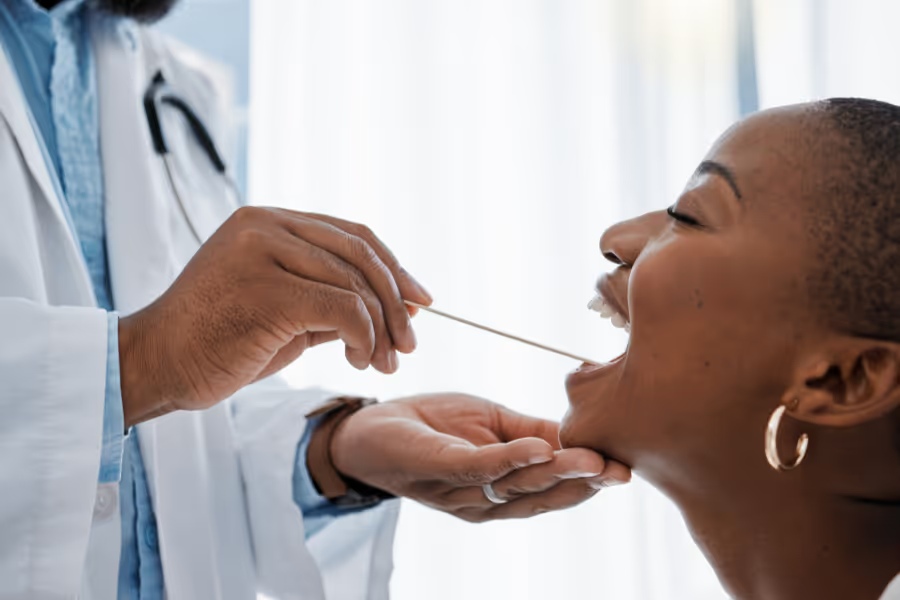Tonsil removal surgery takes out problem tonsils to reduce infections and improve breathing, especially during sleep. Find the right ENT surgeon who fits your needs below, serving Canadians in major cities like Vancouver, British Columbia; Edmonton, Alberta; Toronto, Ontario; and Montréal, Québec.
Informational purposes only, not medical or legal advice. Please consult your doctor or surgeon.

Tonsil removal surgery (called a tonsillectomy) is an operation to take out your tonsils—the two lumps of tissue that sit at the back of your throat, one on each side. Tonsils are part of your immune system and help sample germs when you’re little, but in some people they become more of a problem than a help, causing repeated infections or blocking airflow when you sleep.
During a tonsillectomy, the surgeon opens your mouth using a special holder so they can see the tonsils clearly. There are no cuts on the outside of your neck. Through your mouth, they carefully separate each tonsil from the surrounding muscle using tools that may cut and seal at the same time (for example, with heat or other energy). The goal is to remove the tonsils cleanly while controlling bleeding as they go.
Sometimes tonsil removal is done on its own; other times it’s combined with adenoid surgery or other airway procedures. The main idea is to reduce infection or obstruction coming from the tonsils by taking away the tissue that keeps causing trouble.
Going private lets you:

Here’s the teen‑friendly version.
1. Check‑in and review
2. Anaesthesia
3. Position and prep
4. Remove the tonsils
Using tools through your mouth (no outside cuts), the surgeon:
5. Rinse and check
6. Wake‑up and instructions
In most routine cases, especially for older teens and adults, it’s a same‑day surgery, meaning you go home once you’re safe and stable.

Everyone’s different, so follow your surgeon’s plan.
Reality check: this is usually the sore throat peak #1.
How it feels
Goals
What you’ll be doing
Weird phase: pain can stay the same or even feel worse for a bit as scabs form.
How it feels
Goals
What you’ll be doing
The “turning the corner” phase.
How it feels
Goals
What you’ll be doing
Any time after surgery, contact your surgeon or go to emergency if you have:
Exact prices depend on your age, how tricky your tonsils are (bleeding risk, scarring, sleep apnoea), clinic location, and OR time. Always ask for a written, itemized quote.
For private tonsillectomy in Canada, private clinics charge $4,000 - $9,000.
In the United States, you can expect CA$5,500 - $12,100.
(but confirm each clinic’s policy and ask them to itemize)
Choosing your own surgeon is one of the biggest perks of going private. Here's how to choose wisely.
Ask for recent data, such as:
Good clinics are willing to talk about numbers, not just say “it’s safe.”
Make sure they’ve gone over non‑surgical options:
Clear reasons for surgery (frequent infections, big tonsils causing sleep issues, abscess history) = better chance you’ll be happy with the result.
Ask things like:
Look for:
Ask for an itemized quote that separates:
Clarify possible extras:
Tonsil removal surgery is an operation to take out your tonsils when they’re causing more harm than good. It might be right for you if:
No, you do not need a referral for a private tonsil removal surgery in Canada. You can book a consultation directly with a ENT surgeon, and they will review your options and diagnostics.
Your surgeon’s instructions always come first—if their plan is different, follow that.
Breathing and nose routine
Stop smoking/vaping
Medications
Allergy and congestion plan
General health
Medical clearance
Sleep setup
Bathroom and nose‑care station
Comfort kit
Clothing and food
A helper
School and work
Sports and music
Fasting
Skin and nose prep
What to bring
Jewellery and piercings
Your individual risk depends on your health, age, how big/scarred your tonsils are, whether other sleep/airway surgery is added, and how closely you follow after‑care. Always go over your personal risks with your ENT.
Tonsillectomy is generally safe and helps many people with repeated infections or sleep issues, but it’s real surgery with real risks—especially bleeding and pain—so it’s important to decide together with an experienced ENT.
Your situation depends on how often your tonsils act up, what your exam shows (size, scarring, deep crypts, abscess history), sleep study results (if done), and how well non‑surgical care works. Talk details with your ENT.
(when symptoms are significant and persistent)
If you still have questions, then feel free to contact us directly.

Browse vetted ENT surgeons across Canada. Compare prices, qualifications, locations.
BROWSE SURGEONS